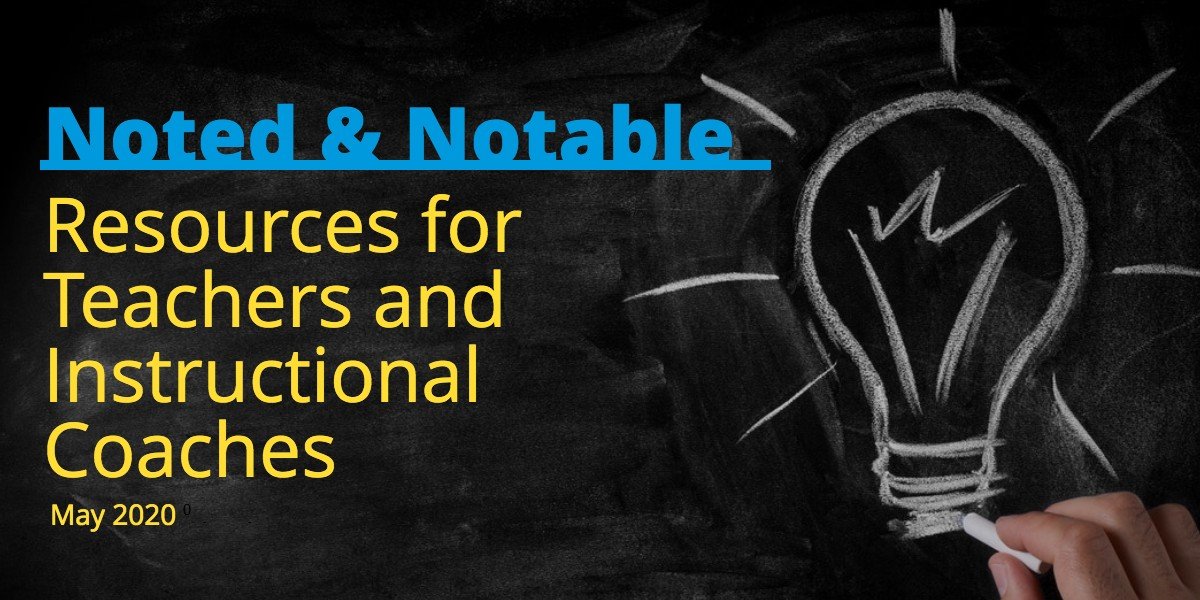Resources for Teachers & Instructional Coaches – May 2020
 Learning-from-home has become the new normal, and educators are starting to plan for this to continue to be the reality for the next academic year.
Learning-from-home has become the new normal, and educators are starting to plan for this to continue to be the reality for the next academic year.
Now, more than ever, educators need professional development about how to plan for the next academic year in the distance learning format. Here are some resources and articles for educators on this topic.
Are your students still career- or college-ready? Ask them how COVID-19 has interrupted their plans
Typically around this time of year, high school seniors are transitioning to what awaits them in the fall. However, this year, school leaders are worried about how to best support these students making the transition. Especially those from low-income families or families who might lack knowledge about the college-readiness process.
Recent data show, for example, that out of 1,000 high school students, 44% of juniors and seniors say the crisis has impacted their plans to pay for college, and 30% of those who planned to go to college now say they will have to put it off. Schools that have never collected data from graduating seniors might want to stick to some core “high-level questions” that cover the student’s post-high school plans, whether they have completed the Free Application for Federal Student Aid, whether they have made a tuition deposit, what influenced their college decision, and their experience with their school’s college advising services, said Erin Grogan, the senior director of research and evaluation for College Advising Corps.
Read more on EducationDive: 5 Immediate Ways Schools Can Support Seniors’ Transition to College
When parents become the teacher, communicating with parents becomes even more important
Whether or not students are learning from home, communicating with parents about the goings-on at school has never been more important.
Technology can help bridge the gap. School districts have many choices available to help keep students, teachers, and parents organized:
Teachers and administrators at K–12 schools recognize the positive impact of parent engagement on student achievement, so many schools and districts now leverage technology to power better and more meaningful relationships with parents and families.
Educational research group Pearson reports that there’s increasing awareness and recognition among teachers and administrators that traditional parent-teacher conferences yield limited results, particularly for traditionally marginalized student populations. Pearson offers eight points that specify how digital tools can improve parent engagement.
Read more on EdTech Magazine: 8 Tips to Strengthen Parent Involvement With Digital Tools
Get ready now. All students will arrive next year behind academically
There is plenty of uncertainty about what school will look like this fall. One thing that is true is that there will be a diverse level of student performance.
Equity and access have been huge concerns with remote learning, to the extent that some districts have not permitted online learning to be their primary approach. Many students simply don’t have access to a stable internet connection or the proper devices. On the flip side, some students have a stable internet connection, proper devices and dedicated “school time” set by their parents or guardians.
This is all magnified by variance in schools’ responses to the disruption, resulting in dynamics that will unquestionably precipitate wider achievement gaps in the fall. We must acknowledge that students are having widely different experiences which will make the return to the classroom challenging.
Read more on EdSurge: How Schools Can Prepare for a Very Different Kind of School Year

